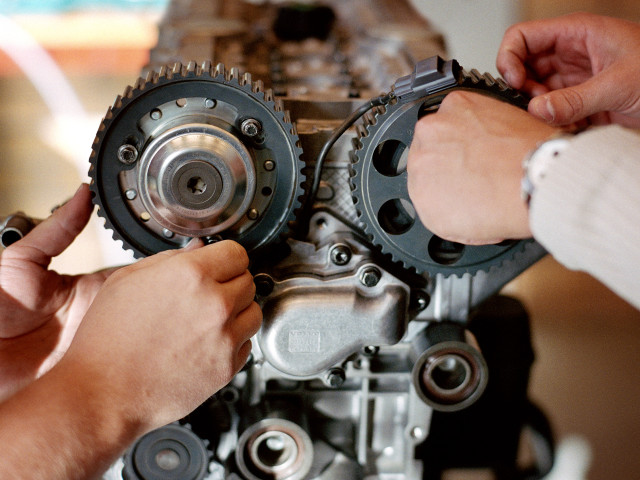Wave types in solids. Excitation of vibrations. Modes of vibrations in solids. The mobility concept. Wave propagation and attenuation. Transmission between structures. Acoustical radiation from transmission through structures. Prediction models.
SD2140 Vibro Acoustics 8.0 credits

The course will provide information about how dynamic forces excite mechanical structures and how various responce wavetypes are transmitted through structures. Finally, the mechanism of acoustic energy radiation from these vibrating structures is examined.
Information per course offering
Information for Autumn 2024 Start 28 Oct 2024 programme students
- Course location
KTH Campus
- Duration
- 28 Oct 2024 - 13 Jan 2025
- Periods
- P2 (8.0 hp)
- Pace of study
50%
- Application code
51832
- Form of study
Normal Daytime
- Language of instruction
English
- Course memo
- Course memo is not published
- Number of places
Places are not limited
- Target group
Open for all Master students, CDEPR, CFATE,CMAST,CMATD, CTFYS from year 3 as long as it can be included in your programme.
- Planned modular schedule
- [object Object]
- Schedule
Contact
Romain Rumpler (rumpler@kth.se)
Course syllabus as PDF
Please note: all information from the Course syllabus is available on this page in an accessible format.
Course syllabus SD2140 (Spring 2022–)Content and learning outcomes
Course contents
Intended learning outcomes
Vibrations are often generated by dynamical and acoustical forces exciting large complex constructions. The aim of the course is to illustrate how these disturbances are excited and how the mechanical energy is transmitted by various wave types in and between structures, how various wave types interact and finally how acoustical energy is radiated from a structure to a surrounding fluid.
Students graduating from the course shall be able to:
- Explain free and forced vibrations of a system
- Discuss and explain how a structure can be excited
- Discuss models for energy flow between structural elements
- Explain the response of a structure excited by a harmonic or random forces
- Explain kinetic and potential energy of a structure as function of the input power to the system
- Discuss some possible methods for the reduction of the transmission of structure-borne sound to a mechanical system
- Use some different methods for the prediction of the response of a structure
Literature and preparations
Specific prerequisites
Completed course SE1010 HSolid Mechanics
Completed course SF1633 Differential Equations I
Completed course SG1130 Mechanics I
Completed course SG1140 Mechanics II
English B / English 6
Equipment
Literature
Examination and completion
If the course is discontinued, students may request to be examined during the following two academic years.
Grading scale
Examination
- TEN1 - Examination, 8.0 credits, grading scale: A, B, C, D, E, FX, F
Based on recommendation from KTH’s coordinator for disabilities, the examiner will decide how to adapt an examination for students with documented disability.
The examiner may apply another examination format when re-examining individual students.
Other requirements for final grade
Written examination (TEN1; 8 university credits).
Opportunity to complete the requirements via supplementary examination
Opportunity to raise an approved grade via renewed examination
Examiner
Ethical approach
- All members of a group are responsible for the group's work.
- In any assessment, every student shall honestly disclose any help received and sources used.
- In an oral assessment, every student shall be able to present and answer questions about the entire assignment and solution.
Further information
Course room in Canvas
Offered by
Main field of study
Education cycle
Add-on studies
SD2165 Acoustical Measurements
SD2150 Experimental Structure Dynamics
SD2155 Flow Acoustics
SD2175 Numerical Methods for Acoustics and Vibration
SD2180 Non-Linear Acoustics
SD2190 Vehicle Acoustics and Vibration